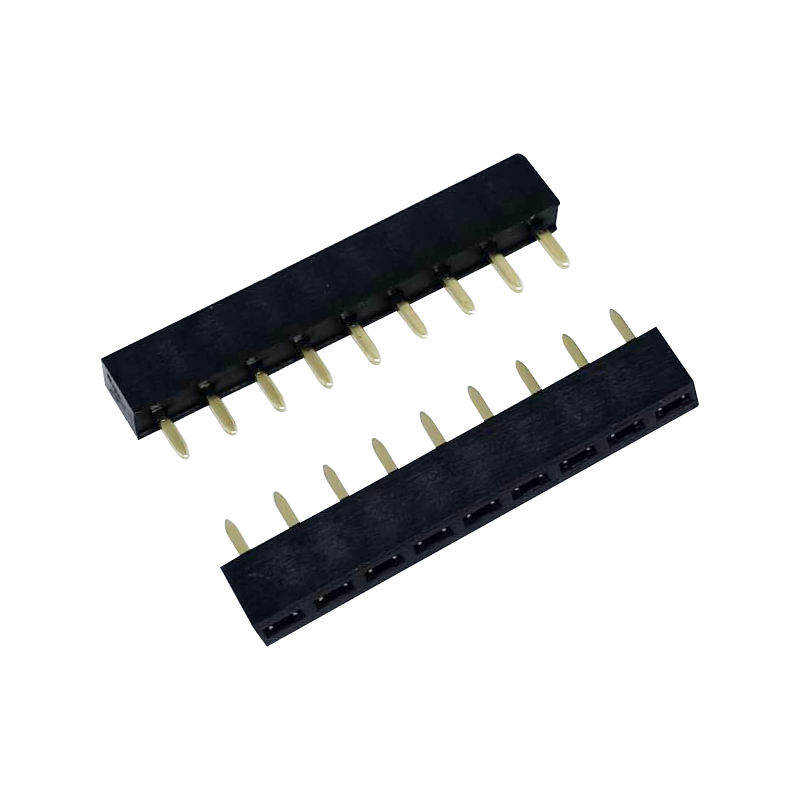The Use of PCB Socket Connectors and PCB Sockets
What are PCB Socket Connectors and PCB Sockets?
PCB Socket Connectors are connectors used to interface PCBs with other circuit boards, cables, or electronic components. They allow for easy and secure connections and disconnections, facilitating modularity and serviceability in electronic designs.

PCB Sockets are receptacles on a PCB into which compatible plugs or pins (usually from other PCBs or electronic components) can be inserted. They are typically used for mounting integrated circuits (ICs) or other components that may need to be removed or replaced.
Uses of PCB Socket Connectors and PCB Sockets
1. Interconnection of Components
PCB socket connectors are widely used to interconnect different electronic components, such as microcontrollers, sensors, and actuators, to the main PCB. This modular approach allows for easier assembly, testing, and maintenance of electronic devices.
For instance, in a complex system like a computer motherboard, various subsystems (e.g., CPU, GPU, RAM) are connected via sockets. This not only simplifies the assembly process but also enables easy upgrades and repairs.
2. Facilitating Modularity and Upgrades
By using PCB socket connectors, designers can create modular electronic systems where individual components or modules can be easily swapped out or upgraded without replacing the entire system. This is particularly beneficial in applications like industrial automation and consumer electronics, where technology evolves rapidly.
3. Ease of Repair and Maintenance
PCBs designed with sockets for critical components make it easier to diagnose, repair, and replace faulty parts. This reduces downtime and maintenance costs, making such designs highly desirable in mission-critical applications like medical devices and aerospace systems.
4. Enhanced Manufacturing Processes
Socket connectors can streamline the manufacturing process by allowing different sections of a PCB to be manufactured, tested, and assembled separately. This reduces the complexity of the production process and improves overall product quality and yield.
5. Flexibility in Design
The use of PCB sockets provides flexibility in design, allowing engineers to prototype and test various configurations without committing to a permanent setup. This iterative approach can lead to more optimized and efficient designs.
Types of PCB Socket Connectors and PCB Sockets
1. IC Sockets
IC sockets are used to mount integrated circuits onto PCBs. They provide a means to easily replace ICs without soldering, which is crucial for testing and development. Types include Dual In-line Package (DIP) sockets, Pin Grid Array (PGA) sockets, and Land Grid Array (LGA) sockets.
2. Board-to-Board Connectors
These connectors join two or more PCBs together, facilitating communication between different parts of a system. Types include stacking connectors, mezzanine connectors, and edge card connectors.
3. Wire-to-Board Connectors
Wire-to-board connectors link wires and cables to PCBs, ensuring secure electrical connections. Examples include terminal blocks, headers, and receptacles.
4. Battery Sockets
Battery sockets are designed to hold and connect batteries to the PCB. They ensure secure and reliable power delivery to the electronic circuit.
5. Memory Sockets
Memory sockets are used for mounting memory modules, such as RAM in computers. They allow for easy upgrades and replacements.
Benefits of Using PCB Socket Connectors and PCB Sockets
1. Enhanced Reliability
Sockets provide a secure and stable connection, reducing the risk of connection failures due to vibration, mechanical stress, or thermal cycling. This is critical in applications where reliability is paramount, such as in aerospace and medical devices.
2. Cost-Effective Maintenance and Upgrades
The ability to easily replace or upgrade components reduces the long-term cost of ownership. Instead of replacing entire boards, only the faulty or outdated components need to be swapped out, saving both time and money.
3. Improved Manufacturing Efficiency
Socket connectors simplify the assembly and testing processes. PCBs can be produced and tested in sections, then connected together, improving manufacturing efficiency and reducing error rates.
4. Design Flexibility
Sockets allow for greater design flexibility, enabling engineers to experiment with different configurations and easily make changes during the prototyping phase. This leads to more innovative and optimized final products.
5. Scalability
Modular designs using PCB sockets can be easily scaled up or down based on requirements. This is particularly useful in applications where different versions of a product are needed, each with varying capabilities and features.
Considerations When Using PCB Socket Connectors and PCB Sockets
1. Electrical Performance
It’s important to consider the electrical characteristics of the connectors, such as impedance, capacitance, and inductance, to ensure they meet the requirements of the specific application. Poor electrical performance can lead to signal integrity issues and reduced overall system performance.
2. Mechanical Durability
The connectors must be robust enough to withstand repeated insertions and removals without degrading performance. Mechanical durability is crucial in applications where components may be frequently swapped or upgraded.
3. Environmental Factors
Connectors and sockets must be chosen based on the environmental conditions they will be exposed to, such as temperature, humidity, and vibration. Specialized connectors may be required for harsh environments to ensure reliable operation.
4. Size and Space Constraints
The physical size of the connectors and sockets must fit within the design constraints of the PCB and the overall device. This is particularly important in compact electronic devices where space is at a premium.
5. Cost
While connectors and sockets add cost to the PCB design, their benefits often outweigh the initial investment by reducing maintenance costs and improving reliability and flexibility. It’s important to balance the cost with the advantages they offer.
Conclusion
PCB socket connectors and PCB sockets are indispensable components in modern electronic design. They provide the flexibility, reliability, and ease of maintenance necessary for creating complex, high-performance electronic systems. By understanding their uses, types, benefits, and considerations, engineers can effectively incorporate these components into their designs to achieve optimal results.
As technology continues to advance, the importance of modular, easily maintainable, and upgradeable designs will only grow, making PCB socket connectors and PCB sockets even more critical in the future of electronics. Whether in consumer electronics, industrial automation, aerospace, or medical devices, these components will remain key to achieving the performance and reliability demanded by today’s sophisticated electronic systems.
This post provides a comprehensive overview of PCB socket connectors and PCB sockets, highlighting their importance and the value they bring to electronic design and manufacturing.
Kerry Fan
Email:sales09@dghoyato.com





